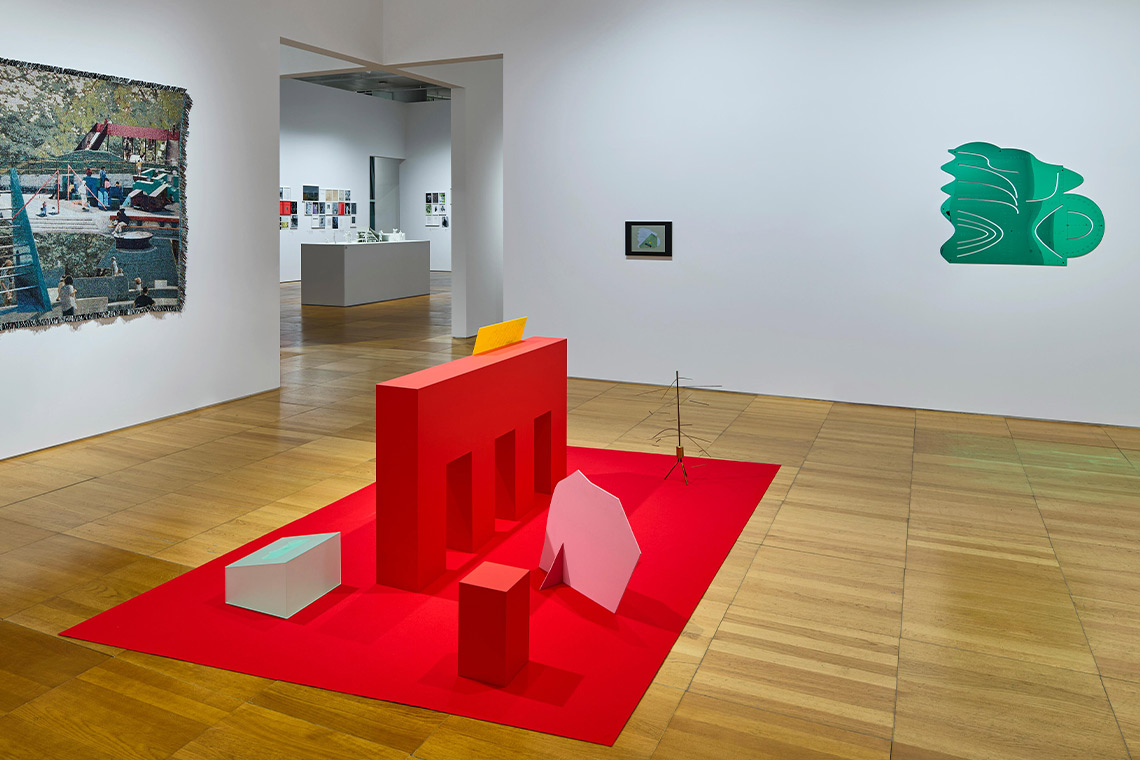In Past of a Temporal Universe at NYU Abu Dhabi Art Gallery, the first retrospective of the artist-researcher-curator Ala Younis in West Asia, time is staged as both medium and subject, where history’s actors return to speak again.
An academic museum situated in a university is perhaps one of the best sites to showcase works as rigorous and questing as those of Ala Younis. Unfolding at NYUAD Art Gallery is Past of a Temporal Universe, the artist-researcher-curator’s first retrospective in West Asia, bringing together works from her two-decade-long practice dedicated to investigating Arab environments and identities. The sprawling exhibition features her iconic installations, including Nefertiti (2008), Tin Soldiers (2010-11) and Plan and Plan (fem.) for Greater Baghdad (2015, 2018), alongside newly produced works such as Templates P and D, Climate Conditions and Cut Flowers (all 2025).
The show is at once austere (in its visual presentation) and overabundant (in its volume of information) – a combination that could easily repel but forms an intriguing friction in Younis’s exhibition, sustaining appeal. Take High Dam (Modern Pyramid) (2019), an arresting installation of chromatic geometric forms that greets visitors at the entrance. The bold colours and abstract shapes recall Alexander Calder and Donald Judd. Unlike their self-contained structures, Younis’s installation engages the narratives surrounding the Aswan High Dam, which was constructed across the Nile during the 1960s under the rule of Gamal Abdel Nasser to celebrate national sovereignty and industrialisation. As revealed by the accompanying diagram, each element plays a part in weaving the dam’s visual and ideological mythology: the central rectilinear block, with three rectangular openings, is described as “Nasser as dam”; the steel mobile as “Chahine[‘s] 3 films mobile edits”; the mountain-shaped panels as “soldiers used as extras”; the rectangular block as an “actress on platform” and so on.

The installation is a chapter in the artist’s ongoing High Dam series and is imbued with further meaning as one finds one’s way into an adjacent room, where the rest of the chapters in the series unfold. The constellation of archival photographs, drawings and blueprints in High Dam (Concrete Poetry) (2023–25) and collage-like visual essays of the Study Structure(2025) – created in collaboration with Dr Masha Kirasirova at NYUAD – point to the breadth of the visual language that framed the Aswan High Dam as a monument of progress. These multilayered projects find a compelling counterpoint in the paintings on loan from the Barjeel Art Foundation, which reflect how the dam was perceived and represented by artists of the time, such as Ragheb Ayad, Effat Naghi and Hamed Ewais.
Returning to the geometric installation near the entrance, one realises that it functions as a stage, where the objects embody the historical forces that built the dam, both literally and metaphorically. The abstract shapes invite visitors to draw out relations, reminding us how historical narratives are continuously recomposed in the present. This methodology of the stage echoes through many of Younis’s pieces. In Enactment (2017), installed on the wall left of High Dam (Modern Pyramid), history becomes a stage as human figures from political history – like the vertically stretched-out body of a “sports[man] attempting to jump over the Berlin Wall … [to aid] the military to investigate the sorts of escape possibilities that individuals could try against the wall,” as detailed in the text component of the work – are cropped from archival photographs and placed against a blank white background (or re-imagined in delicate, almost tender graphite drawings). Stripped of context, these figures appear as performers, their acts at once poetic and impassioned. In Younis’s hands, history is exposed as a malleable thing that is rehearsed and reshaped in the present.

Likewise, Plan and Plan (fem.) for Greater Baghdad (2015, 2018), another major installation spanning an entire room in the show, operates as a stage. A pristine white architectural model of the Saddam Hussein Gymnasium in Baghdad, designed by Le Corbusier, is encircled by small male and female figurines. Initially mute, the model gradually transforms into a theatre where fragments from Iraq’s modern sociopolitical and architectural history surface and converge, as the identities and stories of the figurines are illuminated one by one through the mosaic of archival documents, photographs, explanatory texts and digital images on the wall. Drachmas (2018) literally brings the stage into view: 40 miniature recreations of television studios of popular Arab daytime dramas in the 1960s. Through this series, Younis traces how these spaces served as arenas where actors, technicians and writers redefined modern life in the region across time.
Perhaps this is why the artist’s latest series, Climate Conditions (2025), stands out. Installed in a smaller room, the works – mosaic panels and coloured-pencil drawings on archival prints, depicting the buildings of Abu Dhabi – diverge from Younis’s earlier dense, research-driven installations. Yet they remain anchored in the underlying concern of her practice: time. The mosaic pieces, made with materials akin to the buildings’ own façades, mirror the small cracks and gaps in the city’s architecture as it expands and contracts under the extreme heat and humidity of Gulf summers. The result is a quiet sense of temporal dislocation – sweet and wistful – as if these contemporary buildings already belonged to the past. Younis makes palpable the passage of time – the works remind us that we inhabit a temporal universe where the present endlessly reformulates itself into history in motion.



